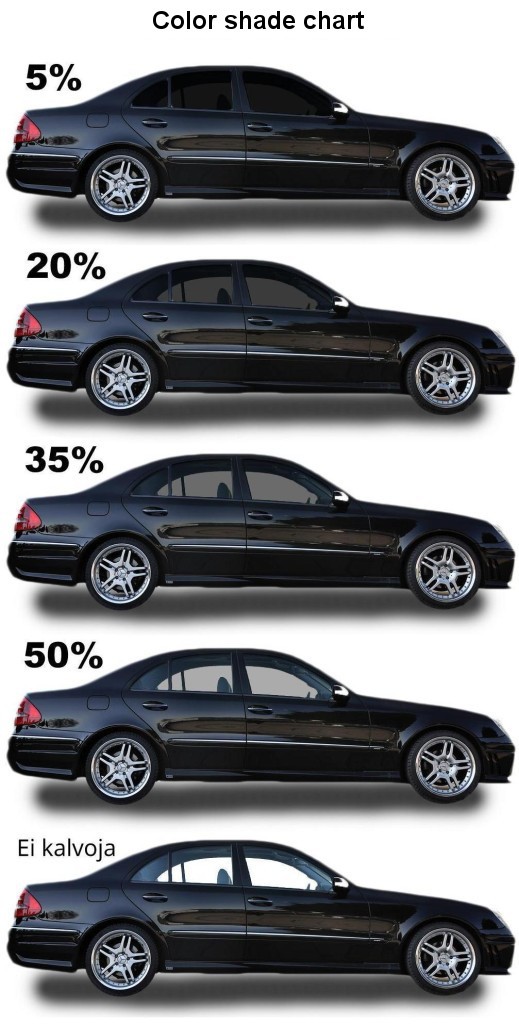Exactly How Vehicle Window Tinting Can Enhance the Resale Worth of Your Car
Exactly How Vehicle Window Tinting Can Enhance the Resale Worth of Your Car
Blog Article
Window Tinting Rules and Guidelines: What You Need to Know Prior To Tinting Your Automobile
Before proceeding with home window tinting for your automobile, it is important to familiarize yourself with the varied laws and standards that regulate this technique across various states. These policies determine the acceptable degrees of tint darkness, often measured by visible light transmission (VLT) portions, and include details stipulations for front windscreens focused on making certain road safety and security. Furthermore, particular territories might use clinical exceptions for people with qualifying problems. Understanding these complexities can conserve you from potential legal implications, but what are the specific guidelines in your state?
Summary of Window Tinting Rules
Home window tinting legislations are often based on variation throughout different territories, mirroring local laws and safety considerations. These laws determine the allowable degrees of color darkness and reflectiveness on vehicle windows, making sure that chauffeurs keep sufficient exposure while additionally safeguarding against hazardous UV rays and warm.
Many guidelines classify home window tinting based on the Visible Light Transmission (VLT) percent, which shows the amount of light that can pass via the home window. Usually, reduced VLT percents represent darker colors. Regulations usually set apart in between the front, side, and rear windows, with more stringent restrictions put on the front windscreen to enhance safety for both the chauffeur and various other roadway individuals.
In addition, some jurisdictions enforce limitations on the reflectivity of the color, avoiding excessive glare that might hinder visibility. Exemptions to these legislations may exist for people with certain clinical problems needing extra sun security. Conformity with home window tinting guidelines is important, as offenses can cause penalties, necessary elimination of the tint, and possible increases in insurance premiums. For that reason, it is important for lorry proprietors to familiarize themselves with regional legislations before proceeding with window tinting installations.
State-by-State Color Laws
Understanding the particular window tinting guidelines in each state is important for lorry owners looking for to adhere to the legislation. Each state in the united state has established its very own set of policies controling window tinting, which can vary considerably. These policies typically dictate the allowed levels of color darkness, the sorts of home windows that can be tinted, and any kind of clinical exceptions that may apply.
For example, states like California have rigid limitations on color darkness for front home windows, while others, such as New Mexico, might enable darker tints. Furthermore, specific states mandate details presence portions for different home windows, consisting of the windscreen, front side windows, and back home windows. It is important for auto proprietors to acquaint themselves with their state's legislations to stay clear of potential fines or charges.
Moreover, some states may require a certification sticker label to be put on tinted home windows, suggesting compliance with state legislations. Failing to abide by these laws not just runs the risk of legal consequences but can likewise affect safety and presence while driving. Therefore, automobile owners must carry out detailed research or consult local authorities to make sure full understanding and compliance with state-by-state color guidelines.
Allowed Color Levels and Kinds
Several vehicle proprietors may be surprised to find out that allowed color degrees and types differ extensively across different states. Each state has developed its very own policies pertaining to the acceptable darkness and reflectivity of home window tint, usually measured by Visible Light Transmission (VLT) percents. VLT refers to the amount of light that can pass via the colored home windows; therefore, a reduced percentage shows a darker color.

In addition, the kinds of tint products permitted can differ, with some states prohibiting mirror-like or metal finishes. It is essential for car owners to acquaint themselves with their state's details laws to guarantee compliance. Non-compliance can lead to penalties, obligatory removal of the color, or various other legal consequences, making it vital to understand these guidelines prior to waging installation.
Medical Exemptions for Tinting
While not all states supply allowances for medical exemptions relating to home window tinting, those that do recognize the need for specific individuals to improve presence and convenience because of medical problems. Numerous medical conditions, such as lupus, skin cancer, and specific eye disorders, can render people over here specifically delicate to sunshine. As a result, these individuals might require darker tints to safeguard themselves from unsafe UV rays and glow.

It is very important to note that despite having a medical exception, there may still be restrictions on the level of tint allowed. Compliance with state regulations makes sure that individuals are both secured and within lawful restrictions. Those considering clinical exemptions ought to call their local Division of Motor Cars or comparable authority to comprehend the procedures and requirements necessary to make an application for an exemption successfully.
Penalties for Non-Compliance
Falling short to abide by home window tinting regulations can cause substantial fines, which vary by state. Legislation enforcement firms are encouraged to release citations for cars that do not comply with the defined tinting guidelines. These fines commonly include penalties, which can range from small quantities to numerous hundred bucks, depending upon the intensity of the infraction and the state in concern.
In some jurisdictions, repeated offenses might cause intensifying fines or added fines, such as required court looks. Furthermore, non-compliance may require the removal of illegal tinting, frequently at the owner's expense. In extreme situations, habitual wrongdoers may encounter suspension of their lorry enrollment up until conformity is attained.
Additionally, insurance coverage implications might develop from receiving several citations for window tint infractions. Insurance companies may see such violations as a sign of riskier behavior, potentially look at here leading to increased costs or difficulty in protection.
To avoid these fines, it is critical for lorry proprietors to familiarize themselves with their neighborhood window tinting regulations and ensure that their vehicle complies (Window Tinting). This positive method not only stays clear of legal implications yet likewise advertises road safety and security
Verdict

The majority of guidelines classify window tinting based on the Visible Light Transmission (VLT) portion, which indicates the quantity of light that can pass through the window. Compliance with home window tinting policies is vital, as violations can result in penalties, required removal of the color, and prospective increases in insurance coverage premiums.Comprehending the specific home window tinting regulations in each state is crucial for car owners seeking to abide with the law. These laws commonly dictate the allowable degrees of color darkness, the types of home windows that can be tinted, and any clinical exceptions that may apply.
For circumstances, states like my company The golden state have rigid limitations on color darkness for front windows, while others, such as New Mexico, may allow darker colors.
Report this page